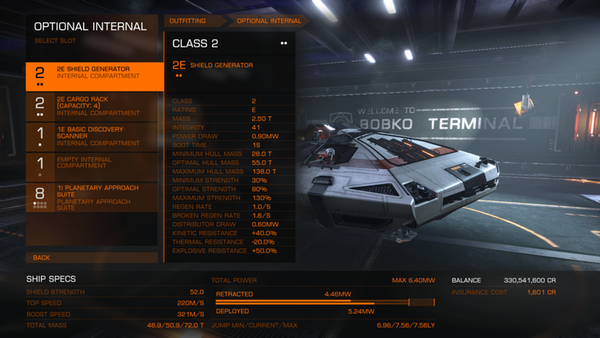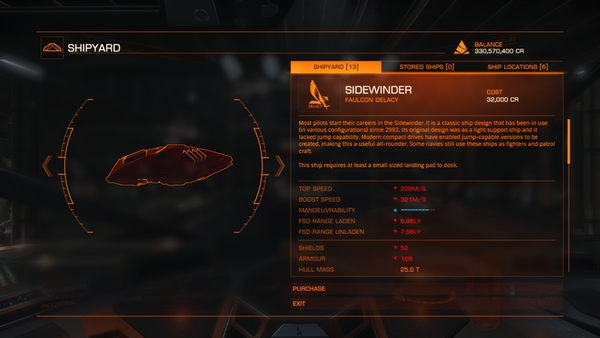In Elite Dangerous, the customization and upgrading of your ship through modules is a pivotal aspect of gameplay that greatly influences your performance in combat, exploration, or trading. Understanding the various types of modules and their characteristics enables you to optimize your ship according to your preferred playstyle.
Module Classes and Ratings
Modules are categorized into different classes, ranging from size 1 to size 7, which indicates their physical space and compatibility with your ship’s layout. Each module also has a rating system that spans from E (the basic level) to A (the highest quality).
– Higher-Rated Modules:
– Classes A and B modules generally provide superior performance, efficiency, and durability. However, they often consume more power and generate increased heat.
– Lower-Rated Modules:
– Classes D and E modules may be less effective in terms of stats but are more affordable and easier on your ship’s power system, making them good choices for initial outfitting or budget-conscious builds.
Upgrading Modules through Engineering
Ship Engineers play a crucial role in enhancing your modules. Accessing an engineer allows you to modify and improve your modules using blueprints.
– Blueprints:
– Each engineer specializes in different modifications (e.g., lightweight for speed, overcharged for enhanced weapon damage).
– The upgrades follow a grading system from G1 to G5, with G5 providing the maximum potential for improvements.
– Overwrite Limitations:
– It’s important to note that each module can only be modified with one blueprint at a time. Applying a new blueprint will replace any existing enhancements.
Experimental Effects
Beyond standard upgrades, modules can also receive Experimental Effects, which provide unique modifications to further refine their performance.
– Types of Effects:
– These can alter attributes such as weapon damage types or mitigate heat output.
– Likewise, each module can have only one experimental effect applied, and not all modules support this enhancement.
Power and Heat Management
When revising your modules, it’s essential to keep close tabs on your ship’s power plant capacity and heat output.
– Power Management:
– Selecting modules that align well with your ship’s power supply is vital to prevent power shortages.
– Higher-rated modules can have a significant impact on the total power consumption, demanding careful selection.
– Heat Considerations:
– Enhanced modules often generate more heat, necessitating a strategic approach to heat management during missions.
Choosing Modules for Customization
In Elite Dangerous, certain modules are common choices for upgrades, influencing your ship’s capabilities:
– Frame Shift Drive (FSD):
– Upgrading your FSD can immensely increase your jump range, allowing for deeper exploration of the galaxy.
– Thrusters:
– Optimizing thrusters improves speed and maneuverability, crucial for combat engagements and evasive maneuvers.
– Power Plants and Shields:
– Enhancements here can bolster energy management and defensive capabilities, respectively, which is essential for survival in hostile environments.
– Weapons:
– Customizing weapon modules can be tailored to fit your engagement style, whether favoring damage output or fire rate.
Summary
Modules are the foundational components of your ship in Elite Dangerous, crucial for adapting it to your playstyle. By upgrading through an engineering system that includes blueprints and experimental effects, players can fine-tune their ships for optimal performance. Understanding the balance of power and heat management alongside thoughtful module selection creates a customized experience that can greatly enhance your effectiveness in combat, exploration, and trading endeavors.





Leave a Reply